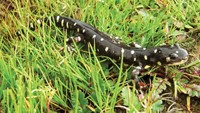Advertisement
Grab your lab coat. Let's get started
Welcome!
Welcome!
Create an account below to get 6 C&EN articles per month, receive newsletters and more - all free.
It seems this is your first time logging in online. Please enter the following information to continue.
As an ACS member you automatically get access to this site. All we need is few more details to create your reading experience.
Not you? Sign in with a different account.
Not you? Sign in with a different account.
ERROR 1
ERROR 1
ERROR 2
ERROR 2
ERROR 2
ERROR 2
ERROR 2
Password and Confirm password must match.
If you have an ACS member number, please enter it here so we can link this account to your membership. (optional)
ERROR 2
ACS values your privacy. By submitting your information, you are gaining access to C&EN and subscribing to our weekly newsletter. We use the information you provide to make your reading experience better, and we will never sell your data to third party members.
Pesticides
Malathion insecticides won’t harm endangered species
Fish and Wildlife Service backtracks on draft evaluation, citing new mitigation measures
by Britt E. Erickson
March 9, 2022
The organophosphate insecticide malathion will not jeopardize threatened and endangered species when certain mitigation measures are put in place, the US Fish and Wildlife Service concludes in a biological opinion released March 8.
The wildlife agency determined last year that malathion is likely to harm 78 species and 23 critical habitats. It now claims that label changes that the US Environmental Protection Agency plans to adopt will protect those species.

The EPA found potential effects on nearly all endangered species and their habitats in its malathion evaluation, released in January 2017 during the final days of the Obama administration. The agency has been working with the Fish and Wildlife Service, Department of Agriculture, and pesticide manufacturers ever since to identify mitigation measures.
The measures agreed to by the federal agencies and pesticide industry include no-spray zones, reduced application rates, fewer applications, and geographical use limitations.
Environmental groups, which have long sought restrictions on malathion to protect endangered species, are disappointed in the Fish and Wildlife Service’s final opinion. They would like to see stronger controls enacted.
“The Biden administration has squandered a historic opportunity to rein in the dangerous use of one of the world’s worst neurotoxic pesticides,” Lori Ann Burd, environmental health director at the Center for Biological Diversity, says in a statement. The center sued the Fish and Wildlife Service in 2018 for failing to address the impacts of malathion on endangered species. That lawsuit prompted the agency to release the March 8 opinion.
This is the first time that the Fish and Wildlife Service has completed a biological opinion for any pesticide, according to the Center for Biological Diversity. But the agency relied on a controversial method that uses incomplete and unreliable pesticide usage data, the advocacy group says. The Fish and Wildlife Service ignored “the best available science” and chose “to rely on unenforceable promises of good behavior by the pesticide makers rather than real on-the-ground conservation measures,” Burd says.
The pesticide industry has been advocating for federal agencies to use real-world data in endangered species evaluations for many years. The Fish and Wildlife Service, which oversees freshwater species, adopted such an approach under the Trump administration.
The National Marine Fisheries Service and the EPA used a more conservative method in their malathion evaluations. That approach relied on maximum-use parameters listed on pesticide labels. In a draft biological opinion, released March 2, the Marine Fisheries Service found that malathion, as well as two other organophosphate insecticides, jeopardize the existence of salmon, Puget Sound orcas, and dozens of other endangered marine species.
That conclusion is in sharp contrast to the Fish and Wildlife Service’s opinion that malathion will not harm bull trout in the Pacific Northwest, the Center for Biological Diversity points out. Bull trout and salmon are biologically similar species and share habitat, the group says.
The EPA expects to approve the new malathion labels within 18 months.





Join the conversation
Contact the reporter
Submit a Letter to the Editor for publication
Engage with us on Twitter